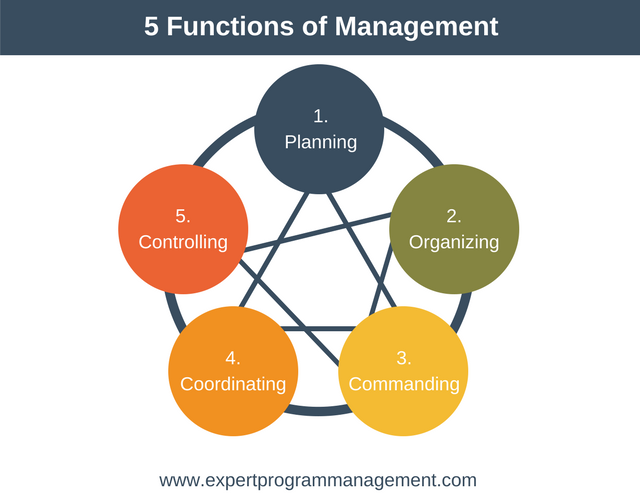Great BSS0646 Leading and Managing Sample
Introduction
The present report is going to discuss on leading and managing procedure of resources in an organization. Leading organization human resources are imperative in case of increasing efficiency of company.
All the resources needed to be managed in a proper way to achieve organizational goals. This report is going to discuss several theories based on organizational leadership and resources management.
The study will be based on home instead senior care (HISC) company which is a senior home care company of UK. Analysis of these theories will be done to improve financial statement of HISC.
Several ways to develop Organizational culture and managing the changes in organization is going to be discussed in this study. The study is going to analyze leadership and resource management of that company and conclude by providing implementable recommendations.
2. Application of theory
2.1 Theory X and Y
There are two different theories introduced by McGregor, which explain employee’s behavior and management activities.
Two distinct employee behaviors are seen and management needs to handle these human resources according to their behavior.
Theory X
According to theory X, employees are usually unmotivated and unwilling to work. Due to this reason, management needs to tackle them and interfere in their work to get the job done. This management style demonstrate employees behaviors by following characteristics
- Employees naturally do not favor working.
- They keep themselves far from taking responsibilities and for every work they need to be directed in the right direction (Jived et al. 2016).http://Great BSS0646 Leading and Managing Sample
- These sorts of employees needed to be forced and controlled to make sure the job has done.
- They need supervisors for doing every job.
- They need to be attracted towards the work otherwise they do not have any motivation or ambition towards profession (Wilhelm et al. 2016).http://Great BSS0646 Leading and Managing Sample
Theory Y
This theory is the opposite of theory Y and here employees are described as a person who is self-motivated, willing to work, find opportunities to develop, creative, enjoy what they do and many more (Shou et al. 2018).http://Great BSS0646 Leading and Managing Sample
Theory Y addressed workers with the various characteristics and these are as follows:
- They are enthusiastic and self-motivated toward work.
- Willingly take responsibilities and complete them within time.
- Aims at fulfilling the goal of the company along with their skills development.
- Creative work is an inseparable part of their life and solves issues accordingly (Cabello-Medina et al. 2020).http://Great BSS0646 Leading and Managing Sample
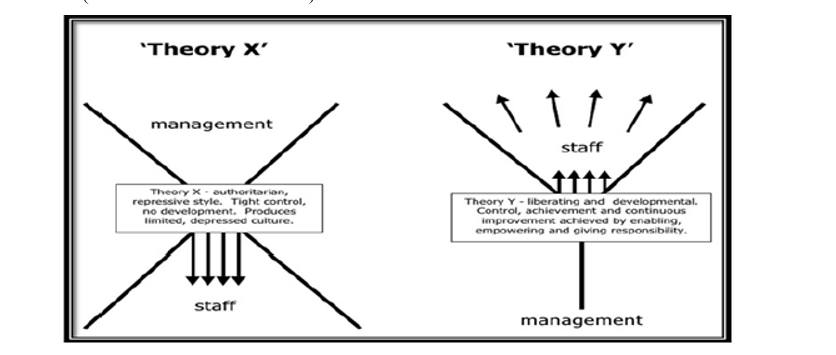
Figure 1: Theory X and Y
(Source: Cabello-Medina et al. 2020)
Application
Theory Y is widely accepted by the firms while theory X is only accepted by firms with large production processes and production work does not demand much skill. In HISC, theory Y is followed and thus, the employees provide services to households with ample amounts of responsibilities.
Home care companies have several responsibilities and they need to take responsibility with full care and attention. As a worker of HISC, one should passionately do their job in order to increase the brand value of the company. Sustainability of HISC is imperative and thus their workers have to be self-motivated.
As it was mentioned earlier, percentage of employees following theory X is less however, in HISC, employees with such characteristics are not acceptable. Every employee is the face of the company and thus a single employee can hamper the image of HISC.
Therefore, employees following theory X needed to be tackled by management of HISC and they have to change the characteristics to make a suitable work environment.
2.2 Contingency theory
Contingency theory is based on the fact that there is no perfect way to manage a business or organization (Song et al. 2017).http://Great BSS0646 Leading and Managing Sample
There are several factors that can hamper the performance of an organization. After analyzing the internal and external factors management should decide what steps are needed to be taken? There are three cardinal factors by analyzing which one can draw a conclusion on what approach they should choose in order to control the dynamics of their business.
These factors are leadership style of the organization, size of an organization, technology based on an organization (Allah et al. 2017).http://Great BSS0646 Leading and Managing Sample
According to this theory, one needs to measure the size of the company in terms of small scale, medium scale or large scale.
Depending upon the size they have to choose a suitable approach to run their business operations smoothly (Ortiz-González et al. 2018).http://Great BSS0646 Leading and Managing Sample
It is highly required that the traits of leaders in organizations are identified by senior management. They should allocate this leader to a team according to his/her virtues and skills.
The approach by the management is dependent on technology used by organizations. It states that technically advanced companies need different approaches to manage resources. Fielder is the founder of this theory and believed that style of leadership is constant and can be measured using a least-preferred Co-Worker (LPC) scale (Bals et al. 2018).http://Great BSS0646 Leading and Managing Sample
This scale helps to find out leadership style and the traits of the leader. On the basis of leading style and capability management plans task division. There are several features of this theory and these are mentioned below:
- Management approaches depend upon the situation and with situational changes management needs to change their working policies.
- Two variables work according to this theory. One is the undependable variable which refers to the situational change. Other is the dependable variable which indicates what the management should do with the situational change (Goldstein et al. 2019).http://Great BSS0646 Leading and Managing Sample
- It helps to understand the multivariate nature of organizations.
- It helps to access internal and external ability of organization.
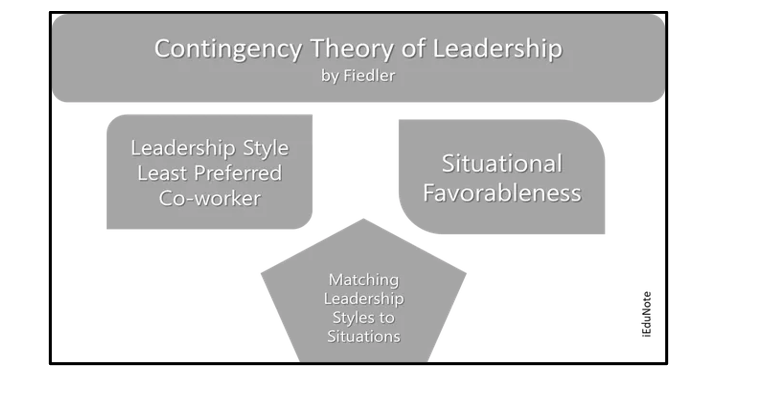
Figure 2: Contingency theory
(Source: Bals et al. 2018)
Contingency theory can be applied to analyze the performance of HISC. This company is not dynamic and the healthcare industry is in a stable situation. Therefore, management of HISC needs to identify the traits of its leaders (Fernández-Robin et al. 2019).http://Great BSS0646 Leading and Managing Sample
HISC leaders follow an autocratic leadership style and thus they handle teams with strong decisions. Leaders make the steps and team members need to follow those steps without much creativity.
Suggestions made by employees are not that much accepted however, submitting customer feedbacks are mandatory. Senior management review and analyze these feedbacks and make decisions according to it.
Therefore, considering the stable condition of the industry, management makes their plans and runs business according to it.
2.3 Behavioral leadership theory
Behavioral theory deals with several actions and reactions made by the leader and followers. According to this theory, leaders are not born instead they are made by adaptation of suitable behaviors, which come from experience (Nawaz et al. 2016).http://Great BSS0646 Leading and Managing Sample
This theory is focused on what leaders do instead of what qualities they have. There are two important behavioral studies: Ohio State studies and Michigan studies. In Ohio State studies there are two parameters one is initiating structure behavior and the other is consideration behavior (Verma, 2018).http://Great BSS0646 Leading and Managing Sample
In first case, leaders make structures and subordinates need to follow that. In case of consideration of behavior, leaders try to make a warm and supportive environment. HISC leaders fall in the 4th quadrant, which indicates high structure and low consideration.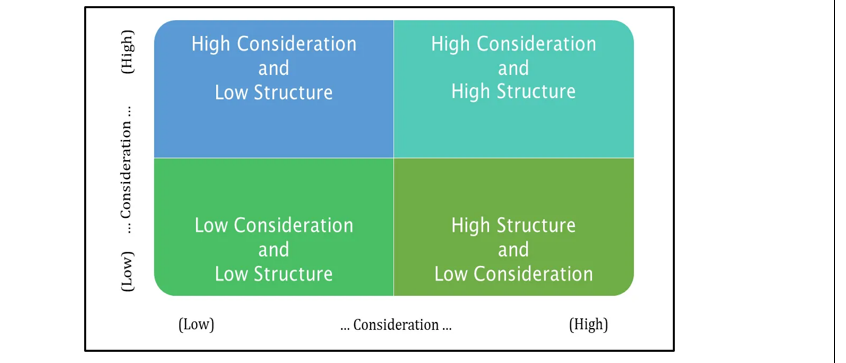
Figure 3: Ohio state leadership studies (behavioral leadership)
(Source: Nawaz et al. 2016)
According to Michigan studies, leadership can be of two types: one is job cantered and the other is employee cantered. In a job oriented style of leadership, leader or team manager fully concentrates on the job role (Cote, 2017).http://Great BSS0646 Leading and Managing Sample
In this case, every team member is delegated with job responsibilities. They are expected to concentrate only on the job and how to do their individual task within a given time period (Balogun and Ajayi, 2018).http://Great BSS0646 Leading and Managing Sample
Concept of employee-centered leadership is different as main focus of this style is to satisfy employees. Currently, HISC management is following the leadership concept that is job-cantered.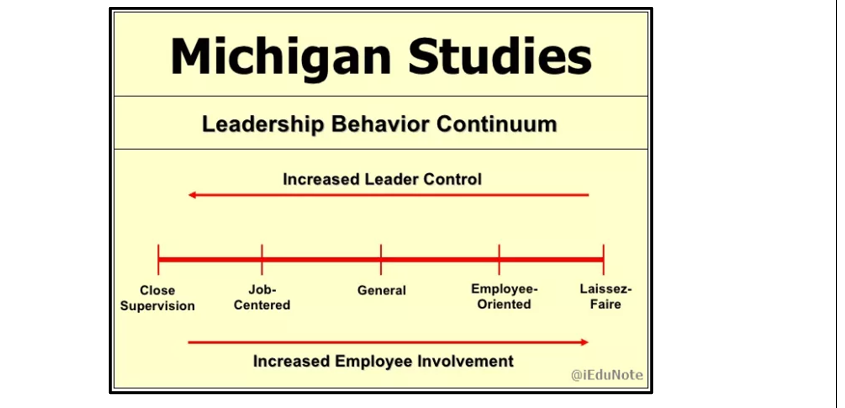
Figure 4: Michigan studies of behavioral leadership
(Source: Cote, 2017)
Employee satisfaction is one of the major aspects of successful companies. HISC is not focusing much on employee satisfaction and only making policies regarding their main job.
Therefore, it is highly expected that employees can leave the company as their demands are not fulfilled by the company. There are many competitors of this company such as senior helpers, Home & health Caregivers and many more. These companies can take control of this industry if HISC does not concentrate on employee satisfaction.
Therefore, leadership style of their leaders can be changed to democratic leadership to satisfy the employee.
2.4 Situational leadership theory
This theory suggests that there cannot be any fixed leadership style. According to the study of Ali et al. (2019), leadership style has to be changed by the leader based on situation that arises.
Dynamic leadership style should be incorporated by leader to manage a team successfully (Meier, 2016).http://Great BSS0646 Leading and Managing Sample
It is highly demanded that controlling, decision making, supervising and other activities of a leader should be changed according to this theory. There are four levels of leadership:
- The cardinal factor of leadership is to make decisions with the help of experience and knowledge. Therefore, a leader tells his/her subordinates what they should do to complete the task (Ali et al. 2019).http://Great BSS0646 Leading and Managing Sample
- Supervision and giving constant feedback to the employees are the next level of leadership.
- A leader advises what a subordinate can do for completing tasks.
- It is the responsibility of leader to distribute work among team members.
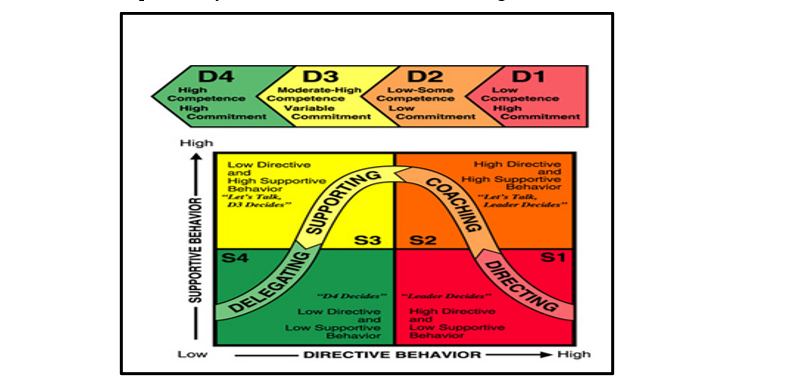
Figure 5: Situational leadership theory
(Source: Bose et al. 2017)
HISC management can implement this leadership theory to manage and its subordinates. Annual revenue of this company is not as expected and stands at 1 billion US dollar (Homeinstead.com, 2020).http://Great BSS0646 Leading and Managing Sample
This financial statement has to be improved and for doing so leaders must adapt situational leadership style in their working. Depending upon workload, market condition, demands of customers and also employee’s demand leaders should change their leadership style.
3. Finding and analysis
- Development of organizational culture
Organizational culture of HISC exists to achieve their business goals. However, these cultures have to be developed to work with full efficiency and proper management in a better way. Several ways for development of organizational culture in HISC are addressed below:
- It is important to listen to the suggestions of the employees as they work in a practical field. Communication is essential between employees and management as it is the key for developing healthy organizational structure (Pena, 2016). It is necessary to collaborate with different departments for performing a work.
- Every work done by an employee should be transparent for both HISC and their clients. Subordinates have to follow the instruction of their team leader to develop a good organization culture in HISC.
- Employees should be rewarded for their short-term achievements to keep them motivated and enthusiastic (Shahbaz, 2018).http://Great BSS0646 Leading and Managing Sample
- Managing changes
HISC belongs to healthcare industry and there are several challenges faced by HISC in recent days. These challenges are:
- HISC has to manage instruments with high technology for providing high quality services to their clients. These are very challenging as technologies are new.
- As a healthcare company, HISC has to keep the detailed information of their client secure. This information is precious as healthcare is a sensitive issue.
- Healthcare costs are rising day by day and therefore it becomes difficult to maintain the budget of the company.
- Healthcare regulatory changes are quite frequent and thus it is getting difficult to manage changes.
Several ways to manage these changes are mentioned below:
- New recruitment is necessary for managing technological changes. Old employees should also be provided with training.
- New cyber security system has to be installed by HISC for protecting information of their clients (Richardson, 2018).http://Great BSS0646 Leading and Managing Sample
- Budget should be made keeping increment in mind to handle frequent cost increment in healthcare industry.
- Management has to be prepared for handling regulatory changes. They should inform all the employees about possible changes.
Improving leadership strategy within the operation sector enhances the financial performance of an enterprise. In short, it can be commented that the leadership behavior of the leader has a great impact on the financial performance of the corporation.
This can be done by deploying the necessary policy, for example, the policy regarding the service of the corporation, innovation as this will improve the growth of company. In other words, if a company grows, then it will also have a good impression on the financial statement of the corporation.
Further, according to Yu et al. (2020), the leadership strategy of the leaders can be improved by improving the execution of the project and engaging the workforce. This state of the corporation enhances sustained growth.
It seems to create an impression on the financial performance of the corporation. The process improvement is also considered as the strategic objectives of the corporation, which also results in an enhancement in the productivity of workforce, engagement of workforce is also named as the improvement in yield of workforce. On the contrary, Athol and Kumar (2016) stated that improvement in the productivity of the employees improves the performance of the corporation, which also results in the improvement in the financial performance of a corporation.
Apart from this, good leadership in Home Instead Care improves the relationship between the workforces within the corporation, this in turn also show an impression on the better yield of the employees.
In addition, this can be seen that the Home Instead Care is not able to show good financial performance in the previous financial year. In the previous financial year, the home care company has earned revenue of 1 billion (Homeinstead.com, 2020).http://Great BSS0646 Leading and Managing Sample
Apart from this, the operational expense of the corporation is also increasing. This situation is creating an impact on the profitability of the enterprise.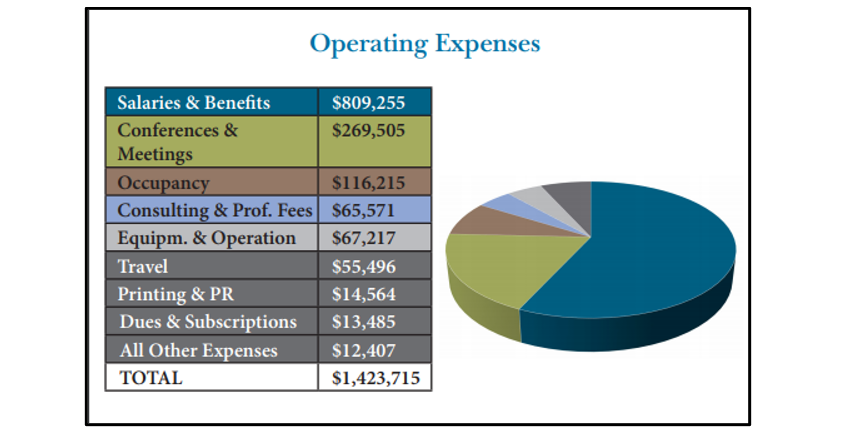
Figure 6: Operating expense of Home Instead Care
(Source: Homeinstead.com, 2020)
Thus this situation signifies a fact that the management of the enterprise was unable to show positive leadership strategy towards the company. The present situation in the corporation has shown a negative impact on the financial statement of the corporation.
This in turn also have an impact on the motivation of workforce. Further, in order to analyze the leadership strategy of a corporation, it can be mentioned that the management of the corporation is following autocratic leadership strategy (Lacinato et al. 2018).http://Great BSS0646 Leading and Managing Sample
In this leadership strategy, the management does not pay attention to the satisfying workforce and it is responsible for decreasing motivation of the employees. As a result of this, it impacts negatively on the performance of the employees and results in a decrease in profitability of organization.
On the other hand, Lacinato et al. (2018) stated that autocratic leadership strategy also has some positive impact on the organization. For example, the autocratic leader motivates the employees for innovation and improves the technology of the corporation.
The business of the corporation mainly focuses on providing service to senior citizens. The improvement in the innovation signifies that they have implemented new technology like Elli, which helps them to take care of the senior citizens (Homeinstead.com, 2020).http://Great BSS0646 Leading and Managing Sample
This seems to create an impact on the R&D of the corporation.
The present situation also has some negative impact on the company. For example, the management of the corporation sometimes has no news of market as they do not take any feedback from workforce of the corporation.
On the contrary Fossae et al. (2018) stated that it impacts the monumental strategy of corporation and if the strategy adopted by corporation is weakened, then that will show an impact on the performance of the corporation.
In order to improve the productivity and the financial performance of Home instead care, the management of corporation will have to focus on the transformational leadership strategy, as this will allow the leader to take feedback from the employees regarding a certain manage mental strategy of the corporation.
The present situation in the enterprise will improve management strategy of the corporation. Apart from this, it will also play an important role in enhancing the motivation of workforce, which will also have an impression on the performance of the corporation. Solid management in the company leads to the sustained growth of the corporation.
According to McAdam et al. (2019), this also has an impact on the profitability of the organization. Apart from this, it can be commented that this situation does not improve the service of the corporation as this has no impact on the performance of the corporation.
Autocratic leadership strategy thus decreases the motivation of corporation and impact on the performance of the corporation. The current situation also has an impact on financial performance of corporation.
The sustained growth in the corporation also leads to a high-quality operational experience. In other words, this situation also leads to the value creation of the corporation, which seems to have an impact on the financial statement of the corporation.
Thus according to Pena, (2016), it can be commented that in order to improve the leadership strategy the management can also implement the situational leadership strategy according to the situation of the corporation.
On the other hand, the situational leadership strategy enhances the productivity of the enterprise and puts a positive impact on the performance of the corporation.
The behavioral leadership strategy of the management will enable them to implement the strategy according to the situation in the corporation. On the other hand, Richardson, (2018) stated that this will also enable the leaders to implement the strategy according to the behaviors of the employees. Apart from this will improve the level of satisfaction of the workforce.
If the satisfaction of the employees improves, it seems to create an impact on the yield of the workforce within the organization. In the case of home instead care, the present situation signifies that if the management is able to implement the behavioral leadership strategy or situational leadership strategy then it will improve the service of the corporation.
On the other hand, Latane et al. (2018) stated that of service of a corporation boosts up then it will like to create an impression on the performance of the organization.
It can be seen that the main business of the corporation focuses on the care of senior citizen. Therefore, it can be commented that the necessity of motivation of the employees in quite important.
Apart from this, it can be mentioned that the management of the corporation will have to implement a transformational leadership strategy so that it will improve the satisfaction as well as the motivation of the employees enhances. According to Matachin et al. (2016), the present situation in the corporation also improves the quality of care in the institution.
This seems to create an impact on the profitability of the corporation, thus this signifies that this situation will improve the financial statement of the corporation. Apart from this, t this will also enable them to properly execute the strategy by having knowledge regarding the strategy of other competitors in the market.
Further, it can be seen that in the previous financial year Home Instead Care has earned revenue of amount of $1Billion (Homeinstead.com, 2020).http://Great BSS0646 Leading and Managing Sample
The management of the corporation can also make systematic review process from the employees regarding the management decision of the company. This will enhance the number of opportunities, which also have an impact on the profitability of the corporation.
This will also result in sustained improvement of the corporation.
In other words, if a company grows, then it will also have a good impression on the financial statement of the corporation. Further, according to Mutanchiang et al. (2016), the leadership strategy of the leaders can be improved by improving the execution of the project.
It seems to create an impression on the financial performance of the corporation. Process improvement is also considered as the strategic objectives of the corporation, which also results in an enhancement in the productivity of the workforce.
4. Conclusion
Leading and managing organizational resources are every imperative and thus in this report it has been found that HISC is not managing its resources properly. Several theories have been discussed in this report which helps HISC to manage their senior managers and leaders. Theory of X and Y have been discussed and it has been found that HISC follows theory Y as its employees need to take a lot of responsibility. In this report, contingency theory has been discussed and it has been described that health care industry and HISC both are stable and thus senior management needs to take action in order to satisfy its employees.
Furthermore, from the discussion of behavioral theory, it can be said that financial performance needs to be improved and for that, giving better service is necessary.
It has been found that proper communication, following the leader and a few other ways are essential to develop organizational culture. There are challenges in terms of technological advancement, regulatory changes and for handling that new recruitment and awareness is necessary.
Further HIS need to implement transformational leadership strategy in enhancing the profitability of the corporation. In addition, the company is also trying to implement Elli in helping the senior citizens.
5. Recommendation
Based on the above study, it can be recommended that the management of the enterprise will have to change the leadership strategy, in order to enhance the profitability of the corporation.
Apart from this, it can be commented that the transformational strategy will also enable them to implement behavioral leadership strategy. On the other hand, this will also enable the leaders to implement the strategy according to the behaviors of the employees.
Apart from this, it will improve the level of satisfaction of the workforce.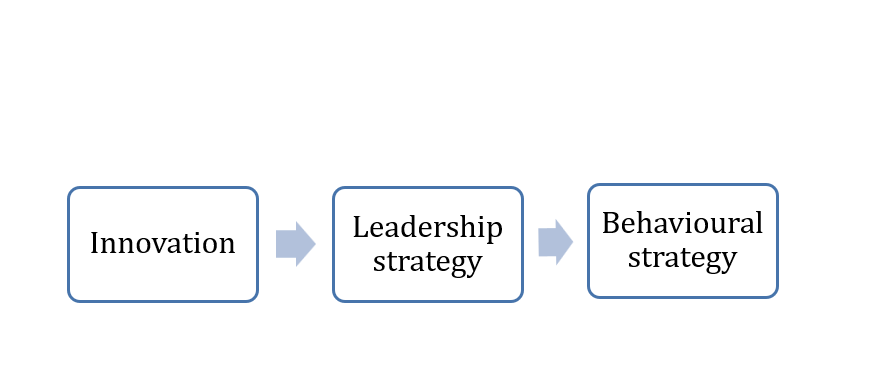
Figure 7: Recommendation
(Source: Created by learner)
- If the satisfaction of the employees improves, it can create an impact on the yield of the workforce within the organization. In the case of home instead, care the present situation signifies that if the management is able to implement the behavioral leadership strategy or situational leadership strategy then it will improve the service of the corporation.
- Apart from this, they can implement situational leadership strategy. In other words, this situation also leads to the value creation of the corporation, which seems to have an impact on the financial statement of the corporation.
- Thus, it can be commented that in order to improve the leadership strategy the management can also implement the situational leadership strategy that will help them to implement the leadership strategy according to the situation of the corporation.
- On the other hand, it impacts the managerial strategy of the corporation and if the strategy adopted by corporation is weakened, then that will show an impact on organizational performance.
- In order to improve the productivity and the financial performance of Home instead care, the management of corporation will have to focus on the transformational leadership strategy, as this will allow the leader to take feedback from the employees regarding a certain manage mental strategy of the corporation.
- On the other hand, this will also enable the leaders to implement the strategy according to the behaviors of the employees. Apart from this will improve the level of satisfaction of the workforce. If the satisfaction of the employees improves, it aids in creating an impact on the yield of the workforce within the organization.
- In the case of home instead, care the present situation signifies that if the management is able to implement the behavioral leadership strategy or situational leadership strategy, then it will improve the service of the corporation. Apart from this, they can implement situational leadership strategy. Therefore, it can be mentioned that the profitability of the corporation is decreasing.
Reference list
Aithal, P.S. and Kumar, P.M., 2016. Organizational behaviour in 21st century–’Theory A’for managing people for performance. IOSR Journal of Business and Management (IOSR-JBM), 18(7), pp.126-134.
Ali, S., Zhang, J., Usman, M., Khan, F.U., Ikram, A. and Anwar, B., 2019. Sub-National Institutional Contingencies and Corporate Social Responsibility Performance: Evidence from China. Sustainability, 11(19), p.5478.
Allahi, F., Cassettari, L., Mosca, M. and Mosca, R., 2017, July. An Innovative DSS for the Contingency Reserve Estimation in Stochastic Regime. In The World Congress on Engineering (pp. 43-57). Springer, Singapore.
Balogun, S.K. and Ajayi, M.S., 2018. Leadership strength, personality traits and poitical mishaps in Nigeria. A call for behavioural change. Nigerian Journal of Social Psychology, 1(1), p.2018.
Bals, L., Laine, J. and Mugurusi, G., 2018. Evolving Purchasing and Supply Organizations: A contingency model for structural alternatives. Journal of Purchasing and Supply Management, 24(1), pp.41-58.
Bosse, T., Duell, R., Memon, Z.A., Treur, J. and van der Wal, C.N., 2017. Computational model-based design of leadership support based on situational leadership theory. Simulation, 93(7), pp.605-617.
Cabello-Medina, C., Carmona-Lavado, A. and Cuevas-Rodriguez, G., 2020. A contingency view of alliance management capabilities for innovation in the biotech industry. BRQ Business Research Quarterly, 23(1), p.2340944420901050.
Cote, R., 2017. A comparison of leadership theories in an organizational environment. International Journal of Business Administration, 8(5), pp.28-35.
Fasaei, H., Tempelaar, M.P. and Jansen, J.J., 2018. Firm reputation and investment decisions: The contingency role of securities analysts’ recommendations. Long Range Planning, 51(5), pp.680-692
Fernández-Robin, C., Celemín-Pedroche, M.S., Santander-Astorga, P. and Alonso-Almeida, M.D.M., 2019. Green practices in hospitality: A contingency approach. Sustainability, 11(13), p.3737.
Goldenstein, J., Hunoldt, M. and Oertel, S., 2019. How optimal distinctiveness affects new ventures’ failure risk: A contingency perspective. Journal of Business Venturing, 34(3), pp.477-495.
Homeinstead.com (2020) About the company, Available at: https://www.homeinstead.com/our-story/home-instead-mission [Accessed on: 20.02.2020]
Javed, M., Rashid, M.A. and Hussain, G., 2016. When does it pay to be good–A contingency perspective on corporate social and financial performance: would it work?. Journal of cleaner production, 133, pp.1062-1073.
Ji, X., Zhang, J.H. and Zhao, Y., 2018. Renormalization in large momentum effective theory of parton physics. Physical review letters, 120(11), p.112001.
Latan, H., Jabbour, C.J.C., de Sousa Jabbour, A.B.L., Renwick, D.W.S., Wamba, S.F. and Shahbaz, M., 2018. ‘Too-much-of-a-good-thing’? The role of advanced eco-learning and contingency factors on the relationship between corporate environmental and financial performance. Journal of environmental management, 220, pp.163-172.
Lucianetti, L., Jabbour, C.J.C., Gunasekaran, A. and Latan, H., 2018. Contingency factors and complementary effects of adopting advanced manufacturing tools and managerial practices: Effects on organizational measurement systems and firms’ performance. International Journal of Production Economics, 200, pp.318-328.
Madanchian, M.I.T.R.A., Hussein, N.O.R.A.S.H.I.K.I.N., Noordin, F.A.U.Z.I.A.H. and Taherdoost, H.A.M.E.D., 2016, February. Review of Organizational Leadership Theories. In 10th International Conference on Business Administration (ICBA’16), Barcelona, Spain (pp. 115-119).
McAdam, R., Miller, K. and McSorley, C., 2019. Towards a contingency theory perspective of quality management in enabling strategic alignment. International Journal of Production Economics, 207, pp.195-209.
Meier, D., 2016. Situational Leadership Theory as a Foundation for a Blended Learning Framework. Journal of Education and Practice, 7(10), pp.25-30.
Nawaz, Z.A.K.D.A. and Khan_ PhD, I., 2016. Leadership theories and styles: A literature review. Leadership, 16(1), pp.1-7.
Niknazar, P. and Bourgault, M., 2017. Theories for classification vs. classification as theory: Implications of classification and typology for the development of project management theories. International Journal of Project Management, 35(2), pp.191-203.
Ortiz-González, J.I., Pellicer, E. and Molenaar, K.R., 2018. Management of time and cost contingencies in construction projects: a contractor perspective. Journal of Civil Engineering and Management, 24(3), pp.254-264.
Perna, B.S., 2016. Exploring situational leadership in quick service restaurants. Journal of Business Studies Quarterly, 8(2), p.1.
Richardson, M., 2018. Stepping up: Applying situational leadership concepts to public library work with teens. OLA Quarterly, 24(2), pp.15-18.
Shou, Y., Li, Y., Park, Y. and Kang, M., 2018. Supply chain integration and operational performance: the contingency effects of production systems. Journal of Purchasing and Supply Management, 24(4), pp.352-360.
Song, Y., Cai, J. and Feng, T., 2017. The influence of green supply chain integration on firm performance: A contingency and configuration perspective. Sustainability, 9(5), p.763.
Verma, P., 2018. Behavioural Mechanism to Overcome Leadership Challenges: The Role of Inward Looking Leadership. MANTHAN: Journal of Commerce and Management, 5(2), pp.21-36.
Wilhelm, M., Blome, C., Wieck, E. and Xiao, C.Y., 2016. Implementing sustainability in multi-tier supply chains: Strategies and contingencies in managing sub-suppliers. International Journal of Production Economics, 182, pp.196-212.
Yu, W., Chavez, R., Feng, M., Wong, C.Y. and Fynes, B., 2020. Green human resource management and environmental cooperation: An ability-motivation-opportunity and contingency perspective. International Journal of Production Economics, 219, pp.224-235.
Know more about UniqueSubmission’s other writing services:

